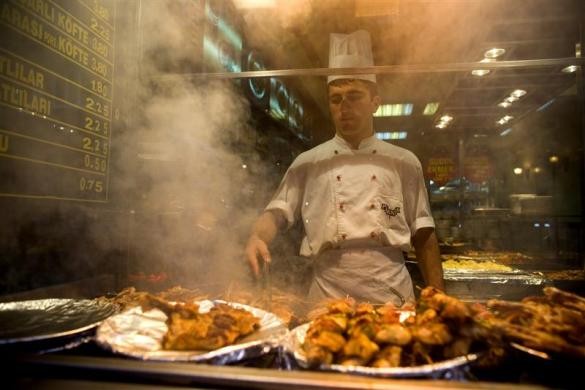Source: Images of Pets
BRUTAL FESTIVAL IN VIETNAM
Source: Occupy for animals!
This
is one Vietnamese festival that makes even non animal lovers
cringe.
Every year, at a village near Hanoi, a pig is brutally chopped into two so that people can smear banknotes with its blood in the belief that it would bring luck.
Every year, at a village near Hanoi, a pig is brutally chopped into two so that people can smear banknotes with its blood in the belief that it would bring luck.
Farmer Nguyen Hung Truc waves
battle flags as he portrays Doan Thuong, an anti-royal military general who
lived in 13th century, during a festival at the Nem Thuong village in Bac Ninh,
about 40 km (25 miles) north of Hanoi, January 28, 2012.
Organized by the villagers, the festival is held on the sixth day of the first month of the lunar calendar to worship the village's deity Doan Thuong.
Every year, thousands of people from the village and nearby villages will gather to smear the blood of the pig on their banknotes in the belief that it would bring luck in the new year. The festival is known as the most brutal in the country and is condemned by many, including some who called on the government to stop the festival.
Organized by the villagers, the festival is held on the sixth day of the first month of the lunar calendar to worship the village's deity Doan Thuong.
Every year, thousands of people from the village and nearby villages will gather to smear the blood of the pig on their banknotes in the belief that it would bring luck in the new year. The festival is known as the most brutal in the country and is condemned by many, including some who called on the government to stop the festival.
Villagers play traditional
music as they take part in a festival at the Nem Thuong village in Bac Ninh,
about 40 km (25 miles) north of Hanoi, January 28, 2012.
A pig is carried around the
village during the festival...
A participant hacks the pig with a
sword...
Villagers smear blood on
banknotes...
Protest-letter
to
the Government of the Socialist Republic of Vietnam
To whom it may concern
I wish to express my deep concern about animal cruelty being conducted in the name of tradition in Vietnam.
On 28th of January 2012 - like every year - citizens at Nem Thuong village have celebrated their cruel festival during which a pig is brutally chopped into two. Every year, thousands of people from the village and nearby villages gather to smear the blood of the pig on their banknotes in the belief that it would bring luck in the new year. The festival is known as the most brutal in your country and is condemned by many, including some who called already on your government to stop the festival.
No one can adequately explain why these practices are carried out year after year – except to say they are "traditional". This however is not a valid argument to continue these practices.
I urge the Government of Vietnam to abolish the above practice for the following reasons:
1. It hurts the animals – contrary to what many believe, animals suffer tremendously before and during such festivals.
2. It hurts us - cruelty against animals harms society as a whole; it signals and normalizes insensitivity in children who can become numb to the suffering of living beings. It is also known to influence certain people to commit violence to other humans.
3. It is bad for tourism - as tourists are abhorred by such practices, the festival will have an adverse effect on tourism, an industry which provides the country with much-needed financial returns. Those foreigners who experience or come to know of this practice leave Vietnam confused and with a heavy heart, rather than uplifted by its paradoxical beauty and friendliness.
I implore you to end these violent practice and help Vietnam move towards a truly peaceful country in keeping with its international image.
I trust that you will support these measures (which are becoming more widespread around the world) and thus promote non-violent cultural practices in Vietnam. Until such a time, however, I regret that it will be necessary to boycott Vietnam both as a tourist and by way of commerce and to encourage others to participate in a boycott as well.
Yours sincerely,
.....................................................................
please sign with your name and address
INSTRUCTIONS:
Please copy and paste the above text (or chose you own words) and send it to the Government of the Socialist Republic of Vietnam using their contact form on their website:
http://www.vietnam.gov.vn/portal/page/portal/English/contact
You can also send an email to the embassy of Vietnam in your country, or to your country's embassy in Vietnam. Email addresses can easily be found using the following online portal:
http://www.embassyworld.com/embassy/Vietnam/vietnam.htm
The Petition

Please SIGN our ONLINE PETITION to be delivered to the Government of
the Socialist Republic of
Vietnamhttp://www.gopetition.com/petitions/ban-the-brutal-festival-at-nem-thuong-village-vietnam.html
Thank you very much for your signature and for speaking out against this brutal tradition.
Thank you very much for your signature and for speaking out against this brutal tradition.























